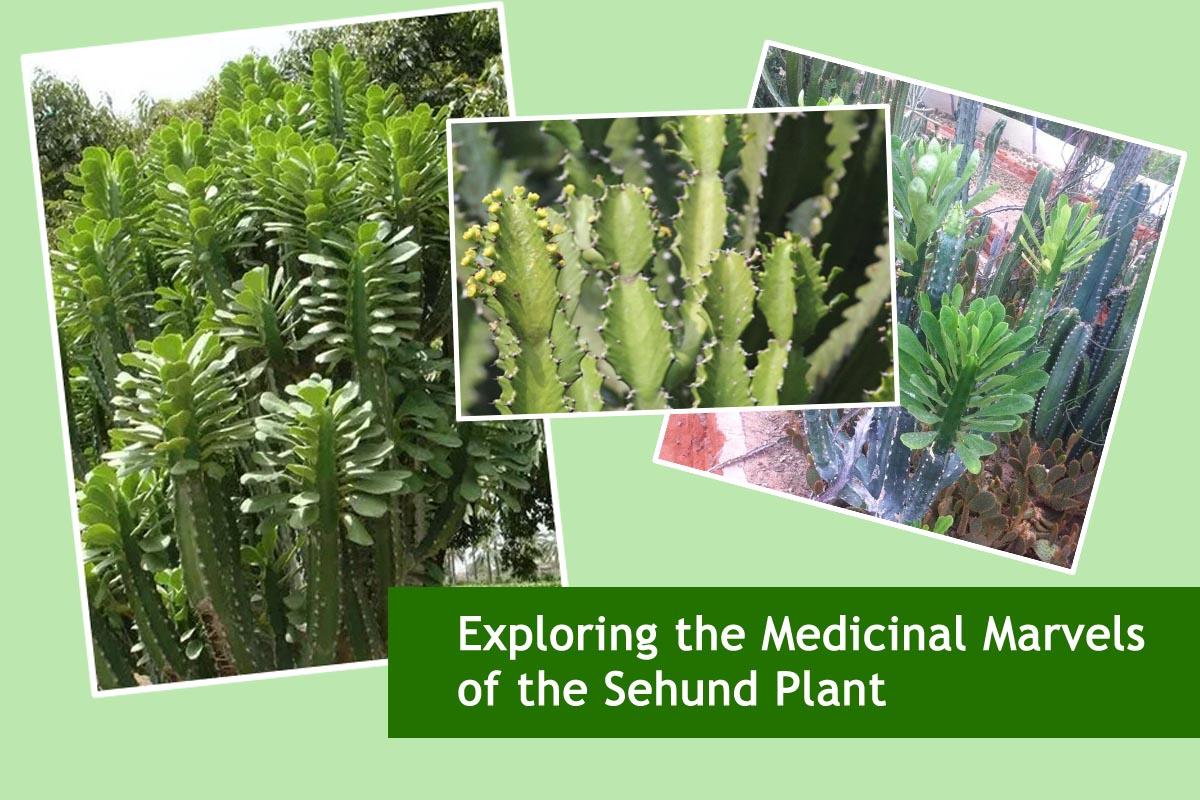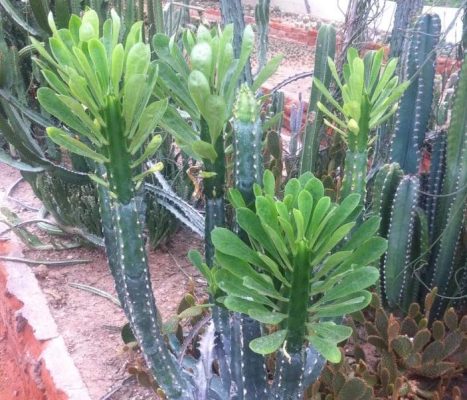
Exploring the Medicinal Marvels of the Sehund Plant
In the vast expanse of nature’s pharmacy, one often stumbles upon hidden gems, plants imbued with medicinal properties that have been harnessed for centuries by various cultures around the world. One such remarkable botanical treasure is the Sehund plant (Aloe vera), celebrated for its diverse range of health benefits and therapeutic uses. From ancient civilizations to modern-day holistic practitioners, the Sehund plant ( Euphorbia neriifolia) has earned its reputation as a versatile healer, offering relief for ailments ranging from minor burns to digestive issues. Let us embark on a journey to uncover the fascinating medicinal marvels of this remarkable succulent.
A Brief Introduction to the Sehund Plant:
The Sehund plant ( Euphorbia neriifolia), also known as Aloe vera or the “plant of immortality,” is a perennial succulent that belongs to the Aloe genus. Native to the Arabian Peninsula, it has been cultivated for centuries across different continents for its medicinal and cosmetic properties. Its distinctive fleshy leaves contain a gel-like substance rich in vitamins, minerals, enzymes, amino acids, and antioxidants, making it a powerhouse of nutrition and healing compounds.
Historical Significance and Cultural Uses:
The healing properties of the Sehund plant ( Euphorbia neriifolia) have been revered throughout history, dating back to ancient civilizations such as the Egyptians, Greeks, and Chinese. Historical records indicate its use in treating various ailments, including skin conditions, digestive disorders, and wounds. Cleopatra and Nefertiti were believed to have incorporated Sehund gel into their beauty regimens, attributing its use to maintaining youthful skin and enhancing beauty.
In traditional Chinese medicine, Sehund has been prescribed for its cooling properties, used to alleviate heat-related conditions such as inflammation, burns, and fevers. Similarly, Ayurvedic medicine recognizes Sehund as a valuable herb for promoting digestive health, skin rejuvenation, and overall wellness.

Also Read This : Harnessing the Power of Alum Water for Lush, Thriving Plants
Health Benefits of the Sehund Plant / Euphorbia neriifolia:
Skin Health and Wound Healing:
The gel extracted from Sehund leaves is renowned for its moisturizing, soothing, and healing properties. It is commonly used to alleviate sunburn, minor burns, cuts, and abrasions. The gel forms a protective barrier over the skin, promoting tissue repair and regeneration while reducing inflammation and discomfort.
Digestive Support:
Sehund has been traditionally used to aid digestion and alleviate gastrointestinal issues such as indigestion, constipation, and irritable bowel syndrome (IBS). Its natural laxative properties help regulate bowel movements and promote gut health, while its anti-inflammatory effects may ease digestive discomfort.
Immune System Boost:
Rich in vitamins, minerals, and antioxidants, Sehund gel supports immune function and helps the body fight off infections. Regular consumption or topical application of Sehund may enhance the body’s natural defense mechanisms, reducing the risk of illness and supporting overall vitality.
Also Read This : Choosing the Right Size Grow Bag: Matching Plants to Containers
Anti-inflammatory and Antioxidant Effects:
The bioactive compounds found in Sehund exhibit potent anti-inflammatory and antioxidant properties, which can help combat oxidative stress, reduce inflammation, and protect against chronic diseases such as arthritis, cardiovascular disorders, and certain types of cancer.
Hair and Scalp Care:
Sehund gel is often incorporated into hair care products for its nourishing and moisturizing effects on the scalp and hair follicles. It can help alleviate dandruff, dryness, and scalp irritation while promoting healthy hair growth and improving overall hair texture and appearance.
Also Read This : Transform Your Buttermilk into a Powerful Garden Pesticide: A DIY Guide
Practical Applications and Usage Tips:
Incorporating Sehund into your daily wellness routine can be done in various ways:
Topical Application:
Apply Sehund gel directly to the skin to soothe sunburn, minor cuts, insect bites, and other skin irritations. It can also be used as a natural moisturizer or added to homemade skincare recipes.
Oral Consumption:
Incorporate Sehund gel into smoothies, juices, or herbal teas for its internal health benefits. Alternatively, Sehund supplements in the form of capsules or tablets are available for convenient consumption.
Also Read This : Easy-to-Grow Varieties Perfect for Indoor and Outdoor Home Gardens
Hair and Scalp Care:
Massage Sehund gel into the scalp to nourish hair follicles, promote hair growth, and alleviate scalp conditions. You can also mix Sehund gel with your favorite shampoo or conditioner for added hydration and conditioning.
The Sehund plant stands as a testament to nature’s healing prowess, offering a bounty of health benefits and therapeutic applications. From ancient civilizations to modern holistic practices, its versatility and efficacy have made it a beloved remedy for a myriad of ailments. Whether used topically or consumed orally, Sehund continues to be a cherished botanical ally in promoting skin health, digestive wellness, immune support, and overall vitality. As we delve deeper into the realms of natural medicine, let us not overlook the profound healing potential of this extraordinary succulent.
Also Read This : Keeping Your Croton Thriving: Essential Care Tips for a Vibrant Plant




